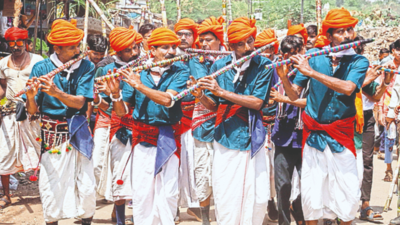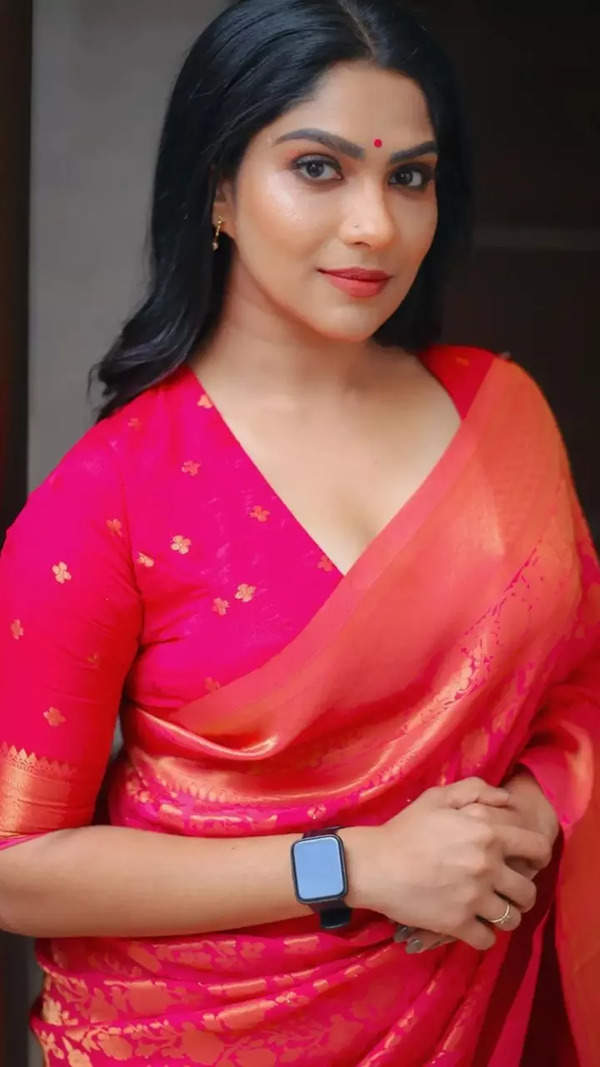Top Searches
- News
- City News
- vadodara News
- These tribal communities don’t need colours to make Holi festival vibrant
These tribal communities don’t need colours to make Holi festival vibrant

Community members celebrate with music and entertainment
VADODARA: While a colourless Holi seems to be a paradox, in these tribal areas communities celebrate the festival with equal fervour, however, without use of colours. The gulal or the colours have been included as part of the tradition only some decades back.
Nagarsinh Palas a retired police officer who established the Bhil Samaj Sudharna Mandal for welfare of tribals, pointed out that he never saw Dhuleti being celebrated in his village Jesawada in Dahod district in his childhood. “It (use of colours) began much later. It is a celebration that came to our areas from the cities,” Palas told TOI.
Tribal researcher Kanjibhai Patel pointed out that Holi is a celebration of the spring, new crop becoming ready and romance since ages. “Tribal communities used colour from ‘kesuda’ (flame of the forest) flowers and mud to celebrate Holi. There was no use of colours, which began much later,” he said.
Palas points out that even ‘kesuda’ (flame of the forest) flowers were not used for making colour. “We used them for decoration on important functions. I remember collecting these for decoration during a visit by former Prime Minister Morarji Desai in 1963 when I was a school student,” Palas said.
Palas, however, pointed out that Holi celebrations did vary from one region to another. “There may be other regions where ‘kesuda’ flowers were used for colour during Holi celebrations. Even in my village it was children who began doing so initially when their parents brought them colours,” he said.
Patel added that there were several traditions during the festival that may seem obscene to the outside world, but had acceptance amongst the tribals. “Holi is known to be celebrated as Kamotsava or Madanotsava which can be called as a celebration of the Cupid. This was true even for the tribal areas,” he said.
Nagarsinh Palas a retired police officer who established the Bhil Samaj Sudharna Mandal for welfare of tribals, pointed out that he never saw Dhuleti being celebrated in his village Jesawada in Dahod district in his childhood. “It (use of colours) began much later. It is a celebration that came to our areas from the cities,” Palas told TOI.
Tribal researcher Kanjibhai Patel pointed out that Holi is a celebration of the spring, new crop becoming ready and romance since ages. “Tribal communities used colour from ‘kesuda’ (flame of the forest) flowers and mud to celebrate Holi. There was no use of colours, which began much later,” he said.
Palas points out that even ‘kesuda’ (flame of the forest) flowers were not used for making colour. “We used them for decoration on important functions. I remember collecting these for decoration during a visit by former Prime Minister Morarji Desai in 1963 when I was a school student,” Palas said.
Palas, however, pointed out that Holi celebrations did vary from one region to another. “There may be other regions where ‘kesuda’ flowers were used for colour during Holi celebrations. Even in my village it was children who began doing so initially when their parents brought them colours,” he said.
Patel added that there were several traditions during the festival that may seem obscene to the outside world, but had acceptance amongst the tribals. “Holi is known to be celebrated as Kamotsava or Madanotsava which can be called as a celebration of the Cupid. This was true even for the tribal areas,” he said.

About the Author
Sachin SharmaSachin Sharma is special correspondent at The Times of India, Vadodara. He reports on politics, civic issues, Vadodara Municipal Corporation and Panchmahal district. He also reports on crime frequently. His areas of interest include following the debates on major issues on TV, following election coverage of all significant polls in the country, Bollywood movies, cricket, international football, spending time with friends and reading on current affairs.
Start a Conversation
FOLLOW US ON SOCIAL MEDIA
FacebookTwitterInstagramKOO APPYOUTUBE









